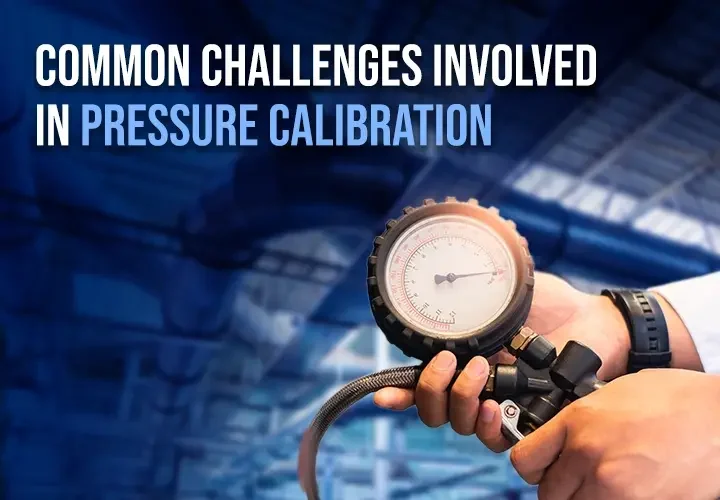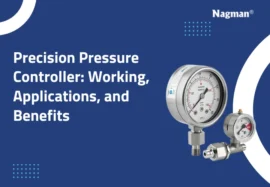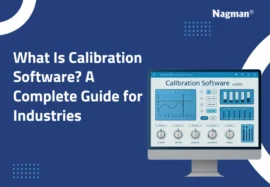Pressure calibration is crucial in assuring accuracy and dependability in industrial operations where precision is vital. However, dealing with the complexity of pressure calibration presents quite a few challenges.
As we dive into the intricacies of this critical process, we intend to shed light on typical obstacles, giving insights and recommendations to guarantee an effortless journey to precision in pressure measurements with pressure calibrators.
6 Common Challenges In Pressure Calibration
Field pressure calibration tools’ needs are constantly developing. Digital technologies and improved sensors have led to advancements in process instruments. Smart pressure controllers must meet higher accuracy and performance standards to be competitive because pressure calibration doesn’t come without difficulties. Here are the most prevalent ones!
Instrumentation Variability
Pressure calibration calls for various instruments, each with its properties and possible causes of error. Understanding and reducing these variables is critical.
Temperature variations, mechanical wear, and material ageing are all responsible for instrumentation performance. Implementing regular maintenance plans and guaranteeing traceability to international standards can assist in alleviating these issues.
Accuracy and Uncertainty
Accuracy Challenges: Achieving precise pressure readings is an ongoing problem. Instruments may drift or deviate from conventional operating conditions over time. Regular recalibration and selecting devices with excellent accuracy ratings are critical measures in overcoming accuracy difficulties.
Uncertainty Considerations: Pressure calibration with Process Calibrators is inherently imprecise owing to multiple reasons. Identifying and quantifying uncertainties associated with apparatus, calibration methods, and ambient factors is critical for accurate pressure readings.
Environmental Factors
Pressure calibration is impacted by environmental factors such as temperature, humidity, and atmospheric pressure. Variations in these factors can cause inaccuracies in pressure readings.
Using environmental controls, using a calibration device that is resilient in various situations, and performing calibrations in controlled environments all assist in eliminating the need for external factors.
Instrument Compatibility and Limitations
Calibration Tool Selection: Selecting the precise calibration tools is crucial. Pressure sensors like Pneumatic pressure controllers and transmitters are available in multiple designs, each needing its calibration processes and instruments. To achieve precise and trustworthy results, the calibration equipment must be compatible with the device being calibrated.
Range Limitations: Each pressure instrument operates within a pressure range. Calibrating a device over its stated range may result in errors. Understanding the pressure constraints of the calibration equipment and the testing device is critical to avoid mistakes.
Traceability and Documentation
Traceability Issues: Ensuring traceability to national or international standards is essential for accurate calibration. The absence of traceability may disrupt the accuracy and acceptability of calibration findings. Establishing a chain of traceability and routinely calibrating devices with precision pressure controllers are critical techniques.
Document Accuracy: Proper documentation is essential for traceability and future reference. Incomplete or erroneous data can confuse which then makes it challenging to repeat or debug calibration procedures. Implementing digital record-keeping systems and following standardized documentation processes improve traceability and record accuracy.
Human Errors
Pressure calibration requires rigorous processes, and human mistakes can have a substantial influence on the findings. Inaccuracies can occur due to errors in parameter setup, incorrect instrument handling, or misunderstanding of readings. Implementing comprehensive training programs, adhering to defined processes, and adding automation whenever possible will help limit the risk of human mistakes.
Wrapping Up
In the complex terrain of pressure calibration, challenges are unavoidable, but they are not insurmountable. Addressing these common challenges necessitates a proactive and thorough strategy. As technology advances, novel solutions like automated calibration methods and sophisticated pressure sensors help to overcome these issues.
Precision in pressure measurements is critical to the success of several businesses, including manufacturing and healthcare. Industries can ensure the accuracy and dependability of their pressure instruments by knowing and managing the issues of pressure calibration, which include unpredictability and uncertainty, environmental influences, and human error.
In the quest for pressured accuracy, when every pound and pascal counts, the road is just as important as the destination. So whether you’re recalibrating a pressure gauge or calibrating a high-pressure transmitter, Nagman can help you navigate the hurdles and ensure that your pressure readings stand out as paragons of precision and dependability in the ever-changing industrial scene.
Be future-ready with the best pressure calibrators with Nagman!






